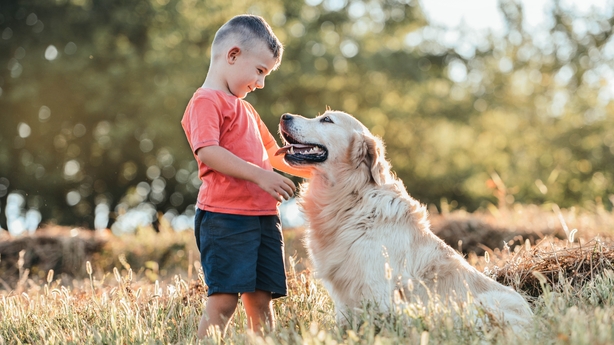When was the last time you brushed your dog's teeth? Are you the kind of owner who scrubs every canine, or do you simply throw a dental chew their way and hope for the best?
Vet Niamh Fagan joined Claire Byrne on RTÉ Radio 1 to discuss the best way to look after your pet's dental health.
"The most important and most effective way to maintain pets' dental care is by brushing," she confirms.
While dental chews "help" they won't do enough to keep your pup's mouth fighting fit.

Fagan suggests starting the habit from a young age: "Start early, go slow, and get a nice tasty toothpaste."
"Human toothpaste" cannot be used on animals as the fluoride is toxic to them, so be sure to pick up a dog- or cat-friendly product. As for the brush, a pet-specific brush or even a child's toothbrush should do nicely.
As pet toothpaste is often food-flavoured (chicken or liver are popular), owners should act as though teeth brushing is a treat and something to look forward to.
"Make it an enjoyable experience as much as possible for the pet," she says.
First, she suggests allowing the dog or cat to lick the toothpaste off your finger to familiarise themselves with it. Next, allow them to lick it from the toothbrush. After that, you can try putting the brush around their mouth so they can adjust to the feeling. Finally, you can start brushing.
"Those steps should be separated out," notes Fagan. "Do each for a week or even two weeks or even longer, it takes six months to build this up. It's kind of the same as teaching your dog to walk on a lead or sit or whatever it might be."

All in all, time and patience are key to building the habit.
In an ideal world, Fagan says that pets would have their teeth brushed daily, but she acknowledges that this isn't practical for most people.
"If you could do it two to three times a week," she suggests. "Plaque sits on the teeth and turns to calculus after about three to four days and when that happens it's like cement on the teeth, no brushing in the world is going to take that off. That's where you need your dental procedures such as a scale and polish or even teeth extracted."
Chronically smelly breath is the most common sign that your dog needs to be brought to the vet, but Fagan also suggests pet owners gently lift the lip of their pets and check if the teeth have a brown coating.

"That's the plaque that we're talking about," she explains. "That is essentially bacteria which is then sitting on the gums and the gums have access to the bloodstream. That bacteria is then going into the bloodstream all the time. It'll also cause irritation to the gum so the gum will be red, it won't be that nice pink colour."
If bacteria reaches the bloodstream, it can cause all sorts of serious health concerns. Small dogs, in particular, as well as some sighthounds seem to be most at risk for dental disease.
As well as brushing, Fagan recommends investing in dental chews, dental foods, and even enzymatic powders that can be added to food and water.
For more doggy dental tips, listen back to the full interview above or click here.

